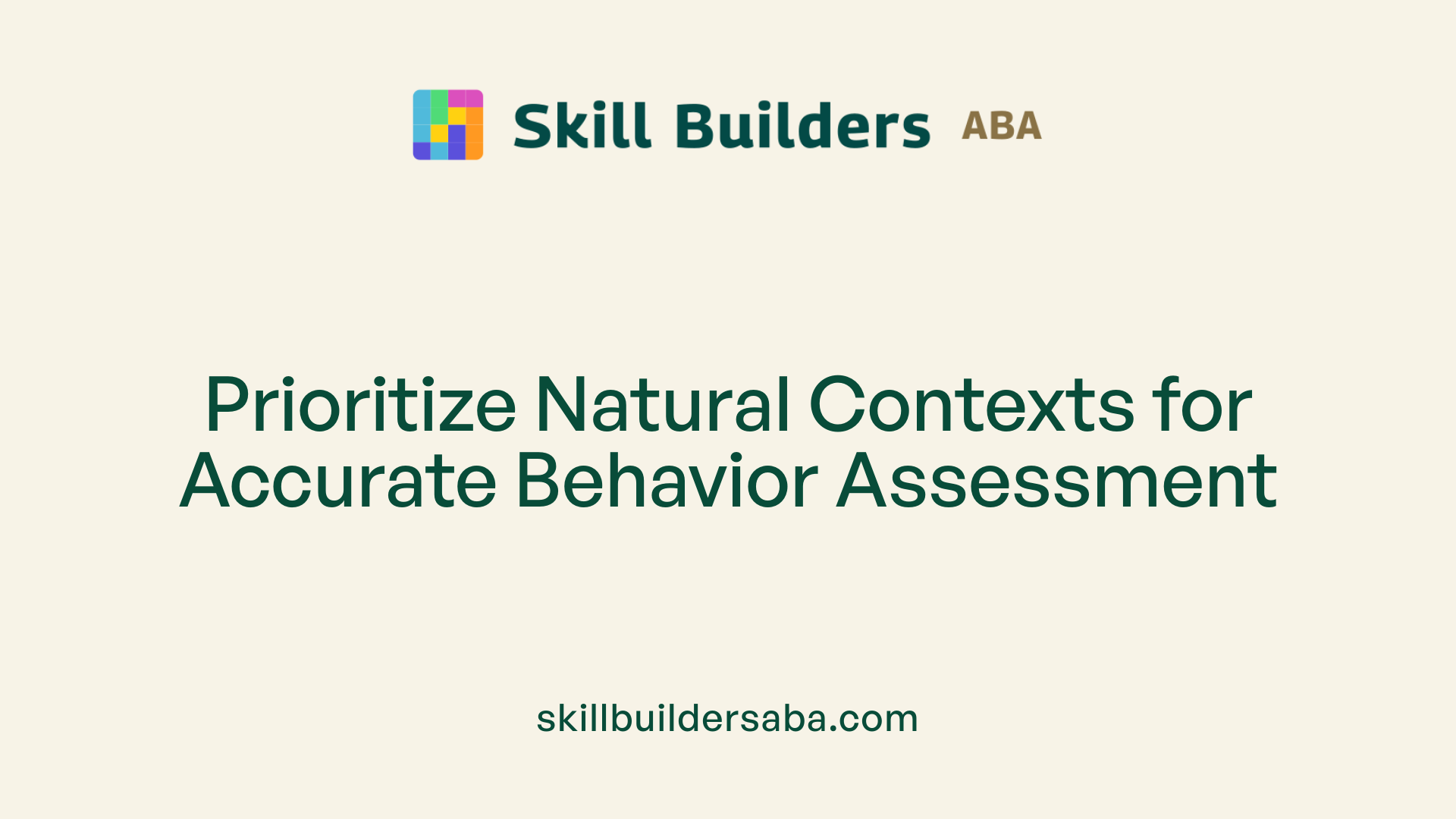
When to update your behavior intervention plan
Keeping Behavior Intervention Plans Effective: Timing and Strategies for Updates
Understanding the Importance of Timely Updates to Your BIP
Behavior Intervention Plans (BIPs) are vital tools in Applied Behavior Analysis (ABA) for addressing maladaptive behaviors in individuals with autism. These plans, grounded in thorough assessments, provide structured strategies to encourage positive behavior change. However, the effectiveness of a BIP depends heavily on continual monitoring and timely updates. This article explores when and why behavior intervention plans should be revisited, ensuring that interventions remain responsive, evidence-based, and individualized for optimal outcomes.
Foundations of Behavior Intervention Plans and Functional Behavior Assessments
What Is the Purpose of a Behavior Intervention Plan (BIP)?
A Behavior Intervention Plan (BIP) is designed to replace problematic behaviors with positive, functional alternatives. It provides a structured approach to guide behavioral change by detailing specific interventions, safety plans, and methods for reinforcement in natural settings. Tailored to the individual's unique needs, a BIP engages caregivers and stakeholders to ensure consistency and effectiveness across environments.
What Is the Role of a Functional Behavior Assessment (FBA)?
The Functional Behavior Assessment (FBA) is a critical process used to identify the reasons or functions behind maladaptive behaviors. By analyzing antecedents (what happens before a behavior) and consequences (what follows), an FBA helps hypothesize the function of the behavior, such as gaining attention, escaping a task, accessing tangibles, or sensory stimulation. It establishes the foundation for creating targeted interventions.
How Are FBAs and BIPs Connected in Development?
The BIP is directly developed from the information gathered through the FBA. The FBA's outcomes, including operational definitions of behaviors, their functions, and contextual factors, shape the intervention strategies outlined in the BIP. This connection ensures that the intervention plan addresses the underlying causes of behaviors rather than merely treating symptoms.
What Are the Essential Components of FBAs and BIPs?
FBA Components: Informed consent; rationale for intervention; multiple assessment methods; clear, operational definitions of behaviors; hypothesized functions including antecedents and consequences; and identification of replacement behaviors.
BIP Components: Detailed, individualized intervention strategies; justification for any restrictive measures; safety and crisis plans; plans for generalization and natural reinforcement; stakeholder involvement; schedules for data collection and treatment fidelity; and procedures for periodic review and updates.
This structured approach ensures interventions are both evidence-based and responsive, fostering effective behavioral improvements over time.
When to Conduct a Functional Behavior Assessment (FBA)
Timing for FBA
A Functional Behavior Assessment (FBA) should ideally be conducted within three months after the emergence of maladaptive behavior. This timeline ensures that interventions are based on recent and relevant information, allowing for more effective behavior change strategies.
Triggers for Conducting FBA
An FBA is particularly crucial when current intervention methods are ineffective in addressing the targeted behaviors. This assessment provides insights into the reasons behind behaviors that are challenging or disruptive, guiding the adaptation or creation of new strategies.
Importance of Timely Assessments
Early completion of an FBA facilitates timely adjustments in treatment plans to better support an individual's needs. Delays in assessment and intervention may prolong maladaptive behaviors and reduce the overall success of behavioral interventions. Therefore, conducting an FBA within a three-month window after problematic behaviors are noticed or interventions fail helps ensure prompt, data-driven decision-making and improved outcomes.
Key Elements in Developing a Behavior Intervention Plan

What Details Are Required in a Behavior Intervention Plan?
A Behavior Intervention Plan (BIP) must be comprehensively developed based on findings from the Functional Behavior Assessment (FBA). It should include clear, detailed interventions tailored to the individual’s unique behaviors and needs. The plan outlines specific strategies to address maladaptive behaviors and promote positive replacement behaviors. Essential components include operational definitions of behavior, assessment methods, and data collection plans to track progress and treatment fidelity.
How Is Justification for Restrictive Measures Addressed?
When interventions involve restrictive measures, the BIP must provide explicit justification for their use. This ensures that any such measures are ethically and clinically warranted, used only when necessary for safety or to address severe maladaptive behaviors. Clear documentation and rationale are crucial to maintain transparency and protect the individual’s rights.
What Safety and Crisis Planning Should Be Included?
A robust BIP incorporates detailed safety and crisis plans. These outline steps to manage emergencies or dangerous behaviors effectively, ensuring the safety of the individual and others. Safety planning includes preventive strategies, crisis intervention protocols, and clear communication guidelines among caregivers and professionals.
How Are Generalization and Natural Reinforcement Strategies Integrated?
Effective BIPs also focus on ensuring that behavior changes generalize across environments and are naturally reinforced. The plan should include strategies to encourage the individual’s use of new skills in various settings beyond therapy sessions. Natural reinforcement, such as social praise or access to preferred activities, is incorporated to support and maintain positive behaviors organically.
These elements work together to create a comprehensive, tailored, and effective Behavior Intervention Plan that supports meaningful and lasting behavior change.
Individualizing BIPs: The Role of Caregivers and Stakeholders
Why Is It Important to Tailor a Behavior Intervention Plan (BIP)?
Every individual’s needs are unique, making it essential for a Behavior Intervention Plan (BIP) to be customized specifically for them. Tailoring the BIP ensures that interventions address the particular functions and contexts of the maladaptive behaviors and build on each person's strengths, abilities, and environment. Personalized plans increase the chances of success by focusing on relevant behaviors and meaningful replacement skills.
How Are Caregivers and Professionals Involved?
Caregivers and other stakeholders play a critical role in shaping and implementing an effective BIP. Their involvement provides valuable insights into the individual’s daily routines, preferences, and triggers. Board Certified Behavior Analysts (BCBAs) collaborate closely with caregivers, teachers, and therapists during the development and ongoing adjustment of the plan. This partnership helps guarantee consistency across settings and enhances generalization of positive behaviors.
What Role Does Collaboration and Communication Play?
Open communication and strong collaboration between the BCBA, caregivers, and other team members are essential. Sharing observations, data, and progress updates promotes a unified approach to intervention. Regular meetings and clear documentation help prevent misunderstandings and ensure that everyone understands their responsibilities. This coordinated effort supports timely updates and maintains treatment fidelity.
Why Are Treatment Fidelity and Data Collection Important?
Monitoring how closely the BIP is followed — known as treatment fidelity — ensures the intervention is delivered as designed. Caregivers and stakeholders are trained to implement strategies correctly, and regular fidelity checks help identify areas needing support. Comprehensive data collection tracks progress and informs decisions about adjustments to the plan. Using data-driven methods fosters continuous improvement and sustained positive outcomes.
The Role of Environment in Assessment and Intervention

Why is the environment important in behavior assessment and intervention?
The environment where maladaptive behavior occurs is crucial for both assessment and intervention. Conducting Functional Behavior Assessments (FBA) in the natural setting allows behavior analysts to observe antecedents, behaviors, and consequences directly as they happen. This real-world context provides accurate information on what triggers the behavior and what maintains it, which is essential for developing effective interventions.
What if the environment isn’t accessible for assessment?
Sometimes, directly assessing the problematic behavior in its usual environment is not feasible. In such cases, professionals must provide a clear rationale explaining why the natural setting cannot be used. Examples include safety concerns or logistical barriers. When this happens, it's important to implement alternative methods that aim to approximate natural conditions or gather comprehensive information from multiple sources to compensate.
How do behavior plans address environmental challenges?
When direct environmental assessment isn't possible, intervention plans include strategies to manage these limitations. This can involve outlining procedures to gradually introduce interventions in typical settings or simulating environmental factors to promote generalization. The goal is to ensure that behavior change transfers beyond clinical settings to everyday life. Including caregivers and stakeholders supports consistency across environments.
By prioritizing the environment in both assessment and intervention, behavior analysts ensure that treatments are realistic, relevant, and more likely to succeed in improving behaviors across contexts.
Monitoring Progress: Data Collection and Treatment Fidelity

Why is data collection important in a Behavior Intervention Plan (BIP)?
Data collection is essential to monitor the effectiveness of interventions targeting maladaptive behaviors. It provides objective evidence of progress or the need for plan modifications. Without data, decisions about the success or failure of treatment lack a solid foundation. Regular collection allows the behavior analyst to track specific trend changes, ensuring interventions remain effective and are adjusted promptly when needed.
What tools and software assist in data monitoring?
Many professionals use specialized software tools designed for real-time data collection and analysis. For example, Artemis ABA is a popular platform that supports ongoing monitoring, enabling timely updates to the intervention plan based on observed behaviors. These tools streamline documentation, facilitate communication among caregivers and clinicians, and support evidence-based practice.
How can treatment fidelity be ensured?
Maintaining treatment fidelity involves training all stakeholders, including caregivers and therapists, on the correct implementation of behavioral strategies. Frequent fidelity checks verify that procedures are followed consistently and accurately. Supervision by qualified BCBAs helps ensure the plan is delivered as intended, which is crucial for achieving the desired behavioral outcomes.
How often should data be reviewed?
Data should be reviewed regularly, with many experts recommending at least monthly analysis. However, review frequency can increase if there are significant changes in behavior patterns. This timely evaluation allows for informed modifications to the BIP, driven by current data rather than fixed schedules, promoting dynamic and effective behavior intervention.
| Aspect | Description | Purpose |
|---|---|---|
| Data Collection | Continuous recording of behaviors and interventions | Tracks progress, supports data-driven decisions |
| Monitoring Tools | Software like Artemis ABA facilitating real-time data entry and analysis | Enhances accuracy, communication, and plan updates |
| Treatment Fidelity | Training and supervision to ensure accurate implementation of intervention strategies | Guarantees consistency and effectiveness |
| Data Review Frequency | Regular, flexible review based on behavioral trends | Enables timely adjustments to maximize intervention success |
Indicators That Signal It’s Time to Update Your Behavior Intervention Plan
Behavioral Changes Signaling Update
One of the main signs that a Behavior Intervention Plan (BIP) needs review is when there are significant changes in the individual's behavior. This could include the emergence of new maladaptive behaviors or changes in the frequency, intensity, or nature of existing behaviors. Such shifts indicate that current interventions may no longer be fully effective.
Lack of Progress or New Needs
If the individual shows little to no progress despite consistent implementation of the BIP, or if new needs arise, it is essential to reconsider and update the plan. This helps ensure that the interventions remain relevant and meet the evolving goals of the individual’s development.
Data-Driven Decision Making
Regular data collection and analysis are critical to determining when updates are necessary. Monitoring progress through objective measurements allows the behavior analyst and team to make informed, evidence-based decisions rather than relying on subjective impressions or fixed schedules. This approach ensures that updates to the BIP are purposeful and goal-directed.
Avoiding Rigid Timelines for Updates
While regular review schedules are helpful, updates should not be bound by rigid timelines. Instead, revisions should occur in response to data and observed behavior changes. This flexible approach allows the intervention to adapt responsively to the individual’s progress and changing circumstances, promoting the best possible outcomes.
Effective communication among team members, including caregivers and professionals, is essential during the update process to maintain consistency and fidelity of implementation.
The Process of Revising a Behavior Intervention Plan

Collaborative efforts in updating BIP
Revising a Behavior Intervention Plan (BIP) is a team effort that involves behavior analysts, caregivers, educators, and other stakeholders. Collaboration ensures the plan reflects the individual's current needs and that all parties implement changes consistently. Engaging stakeholders promotes shared understanding and commitment.
Reviewing assessment data
Effective BIP revisions depend on thorough data collection and analysis. Ongoing monitoring identifies changes in behavior patterns, signaling when adjustments are needed. Behavior analysts review data from direct observations, standardized assessments, and progress reports to guide decisions.
Implementing evidence-based modifications
Updates to the BIP should be grounded in evidence-based strategies tailored to the individual's behavior functions and context. This may include modifying antecedent interventions, teaching alternative replacement behaviors, adjusting reinforcement schedules, or enhancing safety protocols. Any restrictive measures must be justified and carefully documented.
Communicating changes to all stakeholders
Clear and prompt communication about revisions is vital. Team members must be informed of the rationale, intervention adjustments, and roles in implementation. Training and fidelity checks are recommended to ensure that everyone correctly applies the updated plan, promoting consistency across environments.
Together, these steps help maintain the BIP's effectiveness and responsiveness, supporting positive behavioral outcomes.
Applied Behavior Analysis (ABA) and Its Relationship With BIPs
What is Applied Behavior Analysis (ABA)?
ABA is a science of learning and behavior that examines how behaviors are influenced by the environment. Practitioners use ABA to increase helpful behaviors and reduce harmful or interfering behaviors, tailoring interventions to individual needs.
How Do ABA Principles Relate to Behavior Intervention Plans (BIPs)?
BIPs are designed based on detailed assessments called Functional Behavior Assessments (FBAs) and incorporate ABA principles to effectively address maladaptive behaviors. ABA principles help identify environmental factors that trigger behaviors and inform strategies to promote positive change.
What Role Do the ABCs of Behavior Play in ABA and BIPs?
ABA uses the ABC framework—Antecedent, Behavior, Consequence—to understand behavior patterns. Antecedents are events preceding a behavior, behaviors are the actions themselves, and consequences are what follow. BIPs use this framework to hypothesize behavior functions and guide intervention strategies.
What Techniques from ABA Are Integrated Into BIPs?
A core ABA technique used in BIPs is positive reinforcement, where desired behaviors are rewarded to encourage repetition. Interventions include antecedent modifications, teaching alternative behaviors, and reinforcement plans to replace problem behaviors with positive ones.
What Are the Goals of ABA Within a BIP?
The primary aim is to increase helpful behaviors such as communication, social skills, and self-care while decreasing harmful behaviors like aggression or self-injury. BIPs crafted with ABA strategies also focus on safety, generalization of skills, and ongoing data-driven adjustments.
Qualifications and Roles of Professionals Involved in BIP Development and Updates
Roles of BCBAs, BCaBAs, and RBTs
Behavior intervention plans (BIPs) are primarily developed and supervised by Board Certified Behavior Analysts (BCBAs). These professionals conduct functional behavior assessments (FBAs) and design individualized plans tailored to the individual's needs. Board Certified Assistant Behavior Analysts (BCaBAs) and Registered Behavior Technicians (RBTs) provide direct service delivery but operate under the supervision and guidance of a BCBA.
Supervision Requirements
Supervision is crucial to ensure treatment fidelity and successful implementation of BIPs. BCBAs are responsible for supervising BCaBAs and RBTs according to established professional standards. This includes regular monitoring, training, and review of intervention strategies and data collection to support behavior change.
Collaboration with Medical Professionals
Referrals for behavior analysis services require input from qualified medical professionals such as primary care physicians, developmental pediatricians, child psychologists, and psychiatrists. Effective collaboration ensures interventions align with medical diagnoses and consider the overall health and well-being of the individual.
Provider Qualifications and Training
All professionals involved in BIP development and implementation must hold appropriate certifications or licenses and receive ongoing training. BCBAs must be board certified, while BCaBAs and RBTs must meet credentialing standards and complete supervised training. Continuous education is essential to maintain competency and stay current with best practices in applied behavior analysis (ABA).
Insurance and Authorization Considerations in Behavior Intervention Plan Updates
Medicaid and Private Insurance Coverage
Behavior intervention plans (BIPs) and Applied Behavior Analysis (ABA) therapy services are widely recognized treatments for individuals with behavioral challenges, particularly those related to autism. Many private insurance providers and Medicaid programs, including Florida Medicaid, cover medically necessary ABA services prescribed by licensed medical professionals. Coverage often includes adaptive behavior treatment by protocol, family training, and group therapy sessions.
Authorization Requirements
Medicaid recipients must undergo initial assessments using standardized tools like the Vineland-3 and BASC-3 PRQ, with reports submitted for prior authorization before treatment begins. Referrals for behavior analysis services need to come from qualified medical professionals such as developmental pediatricians or child psychiatrists. All services provided must be medically necessary and adhere to current standards set by organizations such as the Council of Autism Service Providers.
Scheduled Reassessments and Documentation Needed
To maintain service authorization, reassessments of behavior and treatment plans are required at least every six months. Core assessment instruments should be reviewed annually to ensure ongoing appropriateness. Documentation must be thorough, including detailed behavior assessments, individual treatment plans with measurable goals and expected timeframes, progress reports, and caregiver training records. All documentation should be properly signed and maintained.
Impact on BIP Updates and Service Continuation
BIP updates are closely tied to ongoing data collection and behavioral assessments, which inform necessary modifications to treatment strategies. Insurance authorization depends greatly on these updates reflecting current needs and progress. Failure to provide up-to-date BIPs and supporting documentation can impede service continuation. Furthermore, regular reviews and evidence-based modifications facilitate tailored interventions that enhance treatment effectiveness and compliance with insurer requirements.
Maintaining Safety and Crisis Management Through Behavioral Plans
Incorporating safety plans in BIPs
Behavior Intervention Plans (BIPs) must include comprehensive safety and crisis plans designed to protect the individual during episodes of maladaptive behavior. These plans outline clear strategies to manage challenging situations and minimize harm, ensuring safety for both the individual and those around them. Safety protocols specify de-escalation techniques and emergency responses tailored to the person’s behavior patterns.
When to revise crisis interventions
Crisis management approaches within a BIP should be frequently reassessed. Revisions are necessary when there are significant changes in the individual's behavior, when existing interventions prove ineffective, or following a safety incident. Decisions to update crisis strategies must be evidence-based, relying on collected data and observations rather than fixed schedules, allowing for timely and appropriate modifications.
Justifying restrictive measures
Any restrictive interventions included in a BIP require detailed justification grounded in the individual’s functional behavior assessment (FBA). Restrictive measures are only incorporated when necessary for safety and are supported by clear rationale explaining their role alongside less intrusive strategies. Transparency about these measures fosters ethical adherence and helps gain approval from caregivers and stakeholders.
Ensuring safety alongside effective intervention
Balancing effective behavior modification with safety is central to BIP development. The plan is individualized in collaboration with caregivers and professionals to maintain consistent implementation and includes training for all involved to manage behaviors safely. Regular fidelity checks and data collection ensure that interventions remain both effective and safeguard the individual’s wellbeing.
| Aspect | Description | Importance |
|---|---|---|
| Safety Plans | Detailed steps for managing crisis and ensuring protection | Prevents harm and guides emergency response |
| Revision Triggers | Behavioral changes, data signals, or safety incidents | Keeps interventions current and effective |
| Restrictive Measures | Justified only when necessary, based on FBA findings | Ensures ethical and needed use of interventions |
| Collaboration & Training | Engagement of caregivers, stakeholders, and staff training to ensure safety | Promotes consistent, safe application of behavior strategies |
Best Practices for Effective Communication and Team Collaboration in BIP Updates

Communication strategies among team members
Effective communication is essential when updating Behavior Intervention Plans (BIPs). Clear, timely, and ongoing dialogue among Board Certified Behavior Analysts (BCBAs), therapists, caregivers, and other stakeholders ensures that everyone is aligned on the objectives and methods. Using structured communication channels like regular meetings, digital platforms, and shared documentation promotes transparency and facilitates the exchange of important information regarding behavioral data and intervention adjustments.
Stakeholder engagement
Engaging all stakeholders—family members, educators, therapists, and medical professionals—in the update process fosters shared understanding and commitment. Collaborative involvement helps tailor the BIP to the individual's evolving needs and ensures consistent implementation across settings. Stakeholder input during plan revisions also supports identification of environmental factors impacting behavior and assists in developing practical, relevant strategies.
Training for consistent implementation
Providing thorough training is critical to maintain treatment fidelity when BIP changes occur. Stakeholders must understand not only the updated strategies but also the rationale behind modifications. This training supports accurate and consistent application of interventions, promoting the child's progress. Refreshers and ongoing support sessions help reinforce correct techniques and address questions.
Ensuring understanding of updates
To guarantee that team members fully grasp BIP revisions, clear operational definitions and detailed explanations of behavioral targets and intervention steps should be provided. Documentation should be accessible and comprehensible to all involved. Monitoring through data collection and fidelity checks further confirms that the new plan is being followed correctly. Encouraging open feedback allows for clarification and continuous improvement.
Continuous Improvement: The Key to Effective Behavior Intervention
Updating behavior intervention plans is a dynamic and essential process that ensures interventions remain relevant and effective. By carefully monitoring behavior through data collection, involving all stakeholders, and responding promptly to changes in needs and progress, professionals can enhance treatment outcomes for individuals with autism. Regular reviews coupled with flexibility in modifications uphold the integrity and success of ABA therapies, ultimately supporting individuals in achieving meaningful improvements in behavior and quality of life.
References
A Resource for Your Family
Feel free to check out our website for a comprehensive look at our services. Remember, you don't have to navigate this alone—send us a message if you need personal support.
Reach Out Today
Learn more about how we can support your child’s growth and development. Contact us to discuss our services and availability in your area.
.svg)